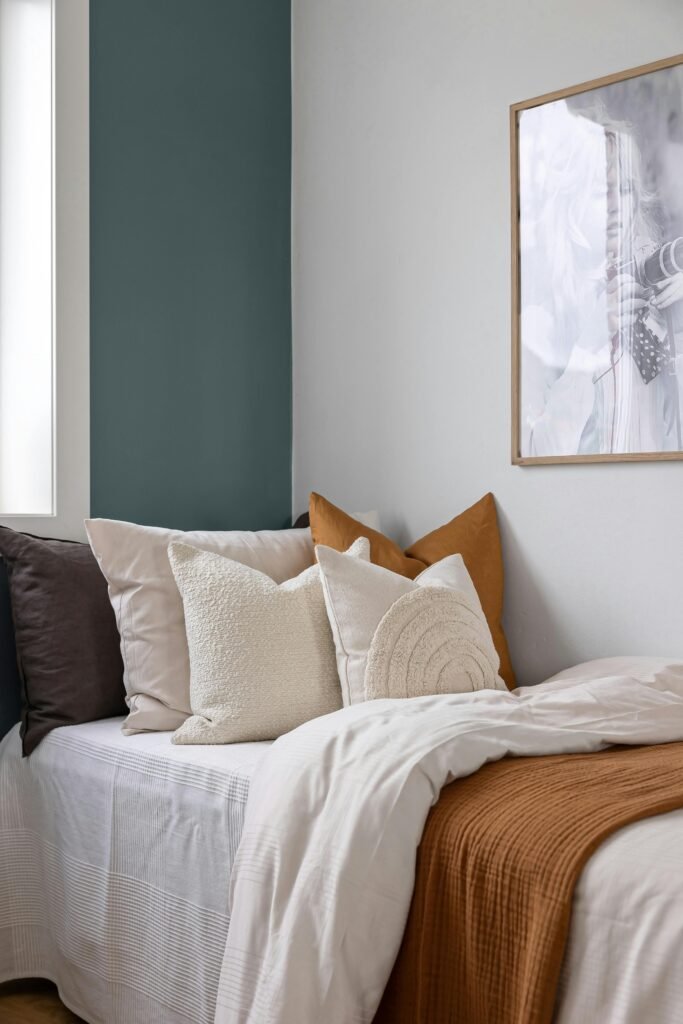Are you tired of purchasing products that don’t last or aren’t comfortable? Well, look no further! In this article, you will learn about the art of selecting the right material for durability and comfort. Whether it’s choosing the right fabric for your bedding or picking the right material for your furniture, we’ve got you covered. By understanding the characteristics of different materials and considering your specific needs, you’ll be able to make informed decisions that will enhance your overall comfort and satisfaction. So, let’s dive in and discover the secrets of selecting the perfect materials!

This image is property of images.pexels.com.
Understanding the Importance of Selecting the Right Material
When it comes to choosing materials, whether it be for clothing, furniture, or other products, it’s crucial to select the right material that offers both durability and comfort. The material used can have a significant impact on the overall performance and longevity of the product. By taking into consideration factors such as softness, breathability, and moisture-wicking properties, you can ensure that the material not only provides comfort but also enhances durability.
Enhancing durability and comfort
Selecting materials that enhance durability is essential, especially for products that will be subject to frequent use or wear. Strong, resistant fabrics such as polyester, nylon, and leather can withstand the test of time and maintain their shape and integrity. These materials are less prone to tearing, fraying, or fading, making them ideal for various applications.
On the other hand, comfort is equally important, especially when it comes to clothing and upholstery. Materials like cotton, wool, silk, and linen are known for their softness, providing a pleasant and cozy experience. The texture of the material plays a crucial role in determining its comfort level, and it’s essential to choose materials that feel good against the skin or offer a comfortable seating experience.
Impact on overall product performance
The material you choose can significantly impact the overall performance of the product. In athletic wear, for example, selecting materials that are breathable and moisture-wicking is crucial to keep you comfortable during physical activity. Fabrics like bamboo and microfiber excel in managing sweat and regulating temperature, allowing you to stay cool and dry.
For mattresses and bedding, materials with excellent breathability and temperature regulation are desirable. Cotton and linen are popular choices due to their ability to wick away moisture and promote airflow, leading to a more comfortable sleep experience.
In outdoor gear, durability and resistance to environmental factors are vital. Materials like nylon and polyester are commonly used for their water resistance and ability to withstand harsh outdoor conditions. Having gear made from these materials ensures longevity and performance even in rugged environments.
Considerations for different applications
Different applications require different material considerations. For automotive interiors, materials need to withstand constant use, exposure to sunlight, and potential spills. Fabrics like leather and polyester blends are commonly used for their durability and ease of maintenance.
Medical textiles, on the other hand, require materials that are sterile, hypoallergenic, and breathable. Cotton and polyester blends are often used in medical textiles due to their ability to maintain cleanliness and minimize the risk of infections.
Understanding the specific requirements for each application allows you to choose materials that will meet the demands of the product, ensuring both durability and comfort.
Factors to Consider when Selecting Material for Comfort
When it comes to comfort, several factors come into play, and considering these factors will help you select the most comfortable material for your needs.
Softness and texture
The softness and texture of a material directly contribute to its comfort level. Materials like cotton and silk are known for their softness, providing a luxurious feel against the skin. Wool, while not as soft, offers a cozy texture, making it a popular choice for winter clothing and blankets. When considering the comfort of a material, look for something that feels pleasant to the touch and offers a delightful sensory experience.
Breathability and temperature regulation
Breathability and temperature regulation are crucial factors to consider, especially for clothing and bedding materials. Fabrics that are highly breathable allow air to circulate freely, preventing the build-up of heat and moisture. Cotton, linen, and bamboo are known for their breathability, making them ideal choices for warm weather and active wear. These materials help keep you cool and comfortable by promoting airflow.
Moisture-wicking properties
Moisture-wicking properties are essential, especially for athletic wear, underwear, and bedding. Materials that have moisture-wicking abilities draw moisture away from the skin, allowing it to evaporate more quickly. This helps keep you dry and comfortable during physical activity or while sleeping. Fabrics like microfiber and synthetic blends excel in moisture-wicking, making them popular choices in performance-oriented products.
Considering these factors when selecting material for comfort ensures that the end product will provide a pleasant and enjoyable experience.

This image is property of images.pexels.com.
Factors to Consider when Selecting Material for Durability
Durability is a crucial aspect to consider when selecting materials, as it directly impacts the lifespan and performance of the product. Here are some factors to consider when it comes to durability.
Strength and resistance to wear
When it comes to durability, the strength and resistance to wear of a material are key considerations. Materials like polyester, nylon, and leather are known for their strength and ability to withstand frequent use without showing signs of wear. These materials are less likely to tear or fray, ensuring that the product remains intact for an extended period.
Easy maintenance and cleaning
The ease of maintenance and cleaning is also an important factor to consider, especially for materials that will be subject to spills, stains, or heavy use. Fabrics like polyester and microfiber are known for their easy care properties, as they can be wiped clean or machine washed without losing their integrity. Choosing materials that require minimal effort to keep clean can significantly contribute to their durability.
Ability to withstand environmental factors
For materials used in outdoor applications or those exposed to harsh environments, the ability to withstand environmental factors is crucial. Materials like nylon and polyester are naturally resistant to water and UV rays, making them ideal choices for outdoor gear and furniture upholstery. Ensuring that the material is capable of withstanding environmental factors will significantly prolong its lifespan.
Considering these factors when selecting materials for durability ensures that the end product will offer longevity and reliable performance.
Different Types of Materials for Durability and Comfort
There are numerous types of materials available that offer both durability and comfort. Here are some popular choices:
Cotton
Cotton is a versatile material known for its softness, breathability, and comfort. It is a natural fiber that allows air to circulate, keeping you cool in warm weather. Cotton is also known for its moisture-wicking properties, making it an ideal choice for athletic wear and bedding.
Wool
Wool is a warm and cozy material known for its excellent insulation properties. It is a natural fiber that regulates body temperature, keeping you warm in cold weather. Wool is also naturally resistant to odors and wrinkles, making it a durable choice for winter clothing and blankets.
Silk
Silk is a luxurious and delicate material known for its softness and lustrous appearance. It is a natural protein fiber produced by silkworms, offering a smooth and comfortable sensation against the skin. Silk is highly breathable and regulates body temperature, making it an excellent choice for both warm and cold weather.
Polyester
Polyester is a synthetic material known for its durability and resistance to wrinkles and shrinking. It is a versatile fabric that can mimic the properties of natural fibers such as cotton, silk, and wool. Polyester is often blended with other fibers to enhance its comfort and performance.
Nylon
Nylon is a synthetic material known for its strength, elasticity, and resistance to wear. It is a durable fabric that is often used in high-performance applications such as athletic wear, outdoor gear, and automotive interiors. Nylon provides excellent durability and comfort when used in the right applications.
Leather
Leather is a natural material known for its durability, strength, and versatility. It is derived from animal hides and can be treated to enhance its durability and comfort. Leather is commonly used in furniture upholstery, footwear, and automotive interiors due to its luxurious feel and long-lasting nature.
Linen
Linen is a lightweight and breathable material known for its natural cooling properties. It is made from the fibers of the flax plant and offers excellent moisture-wicking abilities. Linen is a durable choice for clothing and bedding, providing comfort and longevity.
Bamboo
Bamboo is a natural material known for its sustainability and excellent moisture-wicking properties. It is an eco-friendly alternative to traditional fabrics and offers a soft and comfortable experience. Bamboo is often used in athletic wear, socks, and bedding.
Acrylic
Acrylic is a synthetic material known for its softness and warmth. It is often used as a budget-friendly alternative to natural fibers due to its affordability and easy care properties. Acrylic provides durability and comfort in various applications, including blankets and winter wear.
Microfiber
Microfiber is a synthetic material known for its softness, moisture-wicking properties, and easy care. It is often used in athletic wear, towels, and bedding due to its excellent absorbency and durability. Microfiber fabrics offer both comfort and performance.
Choosing the right material from this wide range of options depends on the specific needs of the product and the desired combination of durability and comfort.

This image is property of images.pexels.com.
Trade-offs between Durability and Comfort
In the quest for the perfect material, it’s essential to understand the trade-offs between durability and comfort. While some materials excel in both aspects, others may prioritize one over the other. Finding the right balance between durability and comfort depends on the specific use case and personal preferences.
Finding the right balance
Certain materials strike the perfect balance between durability and comfort. Fabrics like cotton blends and polyester blends offer a combination of softness, breathability, and durability, making them suitable for a wide range of applications. These materials provide comfort while ensuring that the product remains intact over time.
Prioritizing one aspect over the other
In some cases, it may be necessary to prioritize either durability or comfort, depending on the intended use of the product. For example, in athletic wear, durability is crucial to withstand rigorous physical activity, making fabrics like nylon and polyester the top choice. While these materials may sacrifice some level of comfort, they offer the necessary durability to withstand wear and tear.
Compromises for specific use cases
Certain applications may require compromises to achieve the desired combination of durability and comfort. For example, in medical textiles, the focus is primarily on cleanliness and hygiene. Fabrics like polyester blends can offer the necessary durability and easy maintenance, but the comfort aspect may be sacrificed to meet stringent sterilization requirements.
Understanding the trade-offs and evaluating the specific needs of the product will guide you in selecting the right material that strikes the desired balance between durability and comfort.
Materials for Specific Applications
Different applications require materials that meet specific requirements. Here are some common applications and the materials that excel in each:
Athletic wear
Athletic wear materials need to be durable, moisture-wicking, and breathable. Fabrics like polyester, nylon, and bamboo excel in these aspects, allowing athletes to perform at their best while staying comfortable and dry.
Mattresses and bedding
For mattresses and bedding, materials that offer breathability, moisture-wicking, and comfort are essential. Cotton, linen, and bamboo are popular choices as they help regulate body temperature, promote airflow, and provide a cozy sleep experience.
Furniture upholstery
Furniture upholstery materials need to be durable, easy to maintain, and comfortable. Choices like leather, polyester blends, and microfiber are common due to their strength, resistance to wear, and softness.
Outdoor gear
Outdoor gear requires materials that can withstand harsh environments and resist water. Nylon and polyester are commonly used for their durability and water resistance, ensuring that gear remains intact and functional in rugged conditions.
Automotive interiors
Materials used in automotive interiors need to be durable, resistant to UV rays, and easy to clean. Leather and polyester blends are popular choices as they offer a luxurious feel, durability, and ease of maintenance.
Medical textiles
In medical textiles, materials need to be sterile, hypoallergenic, and breathable. Cotton and polyester blends are often used, offering a balance between cleanliness, durability, and comfort.
Considering the specific requirements of each application allows you to choose materials that are tailor-made for their intended use, ensuring optimal performance and satisfaction.
Industry Standards and Certifications
Industry standards and certifications provide assurance that the materials used meet certain quality, safety, and environmental criteria. Here are some notable certifications and standards to look for when selecting materials:
OEKO-TEX Standard 100
The OEKO-TEX Standard 100 is a globally recognized certification for textiles that ensures they are free from harmful substances. This certification guarantees that the materials used have undergone rigorous testing and comply with stringent safety standards.
Cradle to Cradle Certification
The Cradle to Cradle Certification evaluates products based on their environmental impact throughout their lifecycle. This certification assesses materials for their safety to human health, recyclability, renewability, and water and energy use.
GREENGUARD Certification
The GREENGUARD Certification focuses on indoor air quality and certifies that materials and products emit low levels of VOCs (volatile organic compounds). This certification ensures that the materials used are safe for use in indoor environments, particularly for sensitive individuals such as children or those with respiratory conditions.
ASTM International Standards
ASTM International develops and publishes globally recognized technical standards for materials, products, systems, and services. These standards cover various aspects of material performance, quality, safety, and sustainability, providing a reliable framework for selecting materials.
Considering materials that meet these standards and certifications ensures that the chosen materials have gone through rigorous testing and compliance procedures, ultimately enhancing overall product quality.
Trends in Material Selection for Durability and Comfort
The world of material selection is constantly evolving, with several trends shaping the choices available. Here are some notable trends in material selection for durability and comfort:
Sustainable and eco-friendly materials
There is a growing demand for sustainable and eco-friendly materials due to increased awareness of environmental issues. Materials made from recycled fibers, organic sources, or those requiring less water and energy during production are becoming increasingly popular. These materials offer both durability and comfort while minimizing the environmental impact.
Innovations in textile technology
Advancements in textile technology have led to the development of new materials with enhanced properties. Synthetic fibers with improved durability, moisture-wicking abilities, and breathability are continuously being introduced. In addition, techniques such as antimicrobial treatments and odor-resistant coatings are also improving the comfort and lifespan of materials.
Integration of smart fabrics
Smart fabrics, also known as e-textiles, are materials embedded with electronic components that offer additional functionalities. These fabrics can monitor vital signs, adjust temperature based on body heat, or interact with mobile devices. Smart fabrics enhance both durability and comfort by providing additional features and customization options.
Keeping up with these trends can help you stay informed about the latest advancements in material selection, allowing you to choose materials that incorporate the latest technologies and provide the best possible performance.
Cost Considerations in Material Selection
While durability and comfort are essential, cost considerations also play a significant role in material selection. It’s important to strike a balance between quality and affordability to ensure long-term cost-effectiveness.
Balancing quality and affordability
Materials that offer a good balance between quality and affordability are ideal. This ensures that the chosen materials provide the desired durability and comfort without breaking the bank. Assessing the cost and quality of materials before making a decision allows you to make an informed choice.
Long-term cost-effectiveness
Considering the long-term cost-effectiveness of materials is crucial. While some materials may have a higher initial cost, they may offer better durability, reducing the need for frequent replacements. This can lead to long-term savings and a more sustainable approach.
By considering both the upfront cost and long-term cost-effectiveness, you can select materials that meet your budgetary requirements while still providing the desired level of durability and comfort.
Testing and Evaluating Material Performance
To ensure that materials meet the desired standards for durability and comfort, various testing and evaluation methods are employed. These methods help assess the performance of materials objectively.
Laboratory testing
Laboratory testing involves subjecting materials to various conditions and tests to evaluate their performance. Tests such as tensile strength, abrasion resistance, colorfastness, and pilling resistance help determine the durability and longevity of materials. Other tests focus on breathability, moisture-wicking, and thermal regulation to assess comfort properties.
Subjective evaluations
Subjective evaluations involve gathering feedback from individuals who have used or interacted with products made from specific materials. This feedback provides valuable insights into the comfort, durability, and overall satisfaction of the material.
Consumer feedback and reviews
Consumer feedback and reviews are another valuable source of information when evaluating material performance. Reviews from individuals who have purchased products made from specific materials can provide real-world insights into the durability and comfort of the material.
By combining laboratory testing, subjective evaluations, and consumer feedback, a comprehensive understanding of material performance can be obtained. This information can guide future material selection and ensure that the chosen materials meet the desired standards for durability and comfort.
In conclusion, selecting the right material for durability and comfort requires careful consideration of various factors. By assessing factors such as softness, breathability, moisture-wicking, strength, and resistance to wear, you can identify materials that offer both durability and comfort. Understanding the specific requirements of different applications, considering industry standards and certifications, and staying up-to-date with trends and advancements in material selection further enhances the decision-making process. By finding the right balance, making informed choices, and testing material performance, you can ensure that the materials selected enhance the overall quality and performance of the end product.
